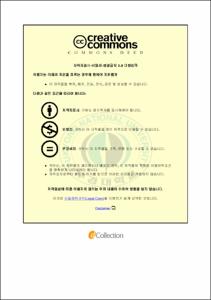수용액 중의 리튬이온으로부터 탄산리튬 제조
- Abstract
- Lithium has been used in many fields of science and technology, from the manufacturing of glass, ceramic, rubbers and pharmaceuticals to the production of lithium-ion batteries. The demand of lithium is increasing due to its wide application as raw material (such as lithium hydroxide, lithium bromide, lithium nitrate, lithium sulfate, lithium nitrobate etc.) for large-capacity rechargeable batteries, future nuclear fusion fuel, light aircraft alloys, etc.. Lithium compounds are mainly produced from lithium carbonate. However, lithium reserves are limited on earth and regionally ubiquitous, so that many countries has been interested in lithium extraction from an alternative source, seawater.
In this study, for the purpose of development of lithium solvent extraction process from concentrated seawater after desalination, experimental research on the carbonation of lithium ions in aqueous solution was performed to establish the optimum synthetic conditions for high quality lithium carbonate from which most of lithium compounds are produced. The physical properties, such as the purity, the conversion efficiency according to carbonate compounds (Na2CO3, NaHCO3, K2CO3, KHCO3,(NH4)2CO3, NH4HCO3), the concentration ratio of carbonate compounds and lithium, the temperature and pH of initial lithium solution have been investigated.
Prepared lithium carbonate at best conditions(using KHCO3, pH 10 of initial lithium solution, concentration ratio of 1 : 3, 100℃) was confirmed to have 99.8% of conversion efficiency and 98.463% of purity. Although it had 99.995% of purity after washing, the washing caused 50% of weight loss.
- Issued Date
- 2014
- Awarded Date
- 2014. 2
- Type
- Dissertation
- Publisher
- 부경대학교
- Affiliation
- 대학원
- Department
- 대학원 화학공학과
- Advisor
- 주창식
- Table Of Contents
- 목 차
표 목차(List of tables)
그림 목차(List of figures)
Abstract
1. 서 론
2. 이 론
2.1. 고순도 희유금속의 제조 기술
2.2. 혼합 추출제를 이용한 용매추출(TTA, TOPO)
2.3. 결정화 (Crystallization)
3. 실 험 22
3.1. 사용시약
3.2. 실험방법
4. 결과 및 고찰
4.1. 산 회수 단계
4.2. 탄산화 단계
4.2.1. 탄산화합물 종류의 영향
4.2.2. 초기 LiCl 수용액 pH의 영향
4.2.3. LiCl/KHCO3 농도비의 영향
4.2.4. 반응온도의 영향
4.2.5. 염 첨가 영향
4.2.6. 수세효과
5. 결 론
6. REFERENCE
- Degree
- Master
- Files in This Item:
-
-
Download
 수용액 중의 리튬이온으로부터 탄산리튬 제조.pdf
기타 데이터 / 2.13 MB / Adobe PDF
수용액 중의 리튬이온으로부터 탄산리튬 제조.pdf
기타 데이터 / 2.13 MB / Adobe PDF
-
Items in Repository are protected by copyright, with all rights reserved, unless otherwise indicated.